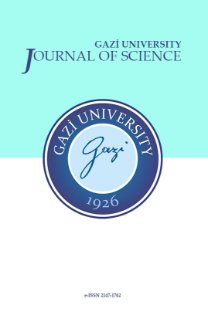An Alternative Estimator for Unrelated Questions in Tripartite Randomized Response Technique
An Alternative Estimator for Unrelated Questions in Tripartite Randomized Response Technique
___
- [1] Warner, S.L., “Randomized response: a survey technique for eliminating evasive answer bias”, Journal of the American Statistical Association, 60: 63-69, (1965). [2] Mangat, N.S., and Singh, R., “An alternative randomized response procedure”, Biometrika, 77: 439442, (1990). [3] Kim, J-M., and Warde, W.D., “A stratified Warner's randomized response model”, Journal of Statistical Planning and Inference, 120 (1-2): 155-165, (2004). [4] Adebola F.B., Ewemooje O.S., and Ayeni O.C., “Efficiency of Alternative Estimators in Randomized Response Technique”, Proceeding of 5Th Annual Conference of School of Sciences, SOS 2017, 346356, (2017). [5] Ewemooje, O.S., and Amahia, G.N., “Improved Randomized Response Technique for Two Sensitive Characters”, Afrika Statistika, 10 (2): 839-852, (2015).
- [6] Ewemooje, O.S., and Amahia, G.N., “Improving the Efficiency of Randomized Response Technique for Two Sensitive Characters”, FUTA Journal of Research in Sciences, 12(1): 65-72, (2016). [7] Singh, H.P., and Gorey, S.M., “An efficient stratified randomized response model”, Journal of Statistical Theory and Practice, 11(4): 790-809, (2017). [8] Ewemooje, O.S., “Estimating two sensitive characters with equal probabilities of protection”, Cogent Mathematics, 4: 1-14, (2017). [9] Ewemooje, O.S., Amahia, G.N., and Adebola, F.B., “Estimating prevalence of induced abortion and multiple sexual partners using improved randomized response technique for two sensitive characters”, Communications in Statistics: Case Studies, Data Analysis and Applications, 3(1-2): 21-28, (2017). [10] Ewemooje, O.S., Adebola, F.B., and Adediran, A.A, “A Stratified Hybrid Tripartite Randomized Response Technique”, Gazi University Journal of Sciences, 31(4): 1246-1266, (2018). [11] Adebola, F.B., Adediran, A.A., and Ewemooje, O.S., “Hybrid tripartite randomized response technique”, Communications in Statistics-Theory and Methods, 46(23): 11756-11763, (2017). [12] Ewemooje, O.S., Adebola, F.B., and Amahia, G.N., “Alternative Estimator in Dichotomous Randomized Response Technique”, Communications in Mathematics and Statistics, DOI: 10.1007/s40304-018-0145-x, (2018). [13] Chaudhuri A., and Christofides T.C., “Indirect Questioning in Sample Surveys”, Spinger-Verlag Berlin Heidelberg, New York, DOI: 10.1007/978-3-642-36276-7, (2013). [14] Chaudhuri A., “Randomized Response and Indirect Questioning Techniques in Surveys”, Chapman & Hall/CRC, Taylor and Francis Group LLC, (2011).
- Yayın Aralığı: 4
- Başlangıç: 1988
- Yayıncı: Gazi Üniversitesi, Fen Bilimleri Enstitüsü
Mehmet BILEN, Ali Hakan ISIK, Tuncay YIGIT
Cubic Transmuted Power Function Distribution
Saiful Islam ANSARI, Monjed Hisham SAMUH, Abouzar BAZYARI
Mehmet SENOL, Metin DAGDEVIREN
Zeki AYTAC, Bahar KAPTANER IGCI, Ali KANDEMIR, Ahter FISNE
Amanpreet SANDHU, Sheifali GUPTA
Geometric-Zero Truncated Poisson Distribution: Properties and Applications
Hamid BIDRAM, Coşkun KUŞ, Yunus AKDOĞAN, İsmail KINACI
An Alternative Estimator for Unrelated Questions in Tripartite Randomized Response Technique
S-Band Active Phased-Array RF Beam Forming Networks
